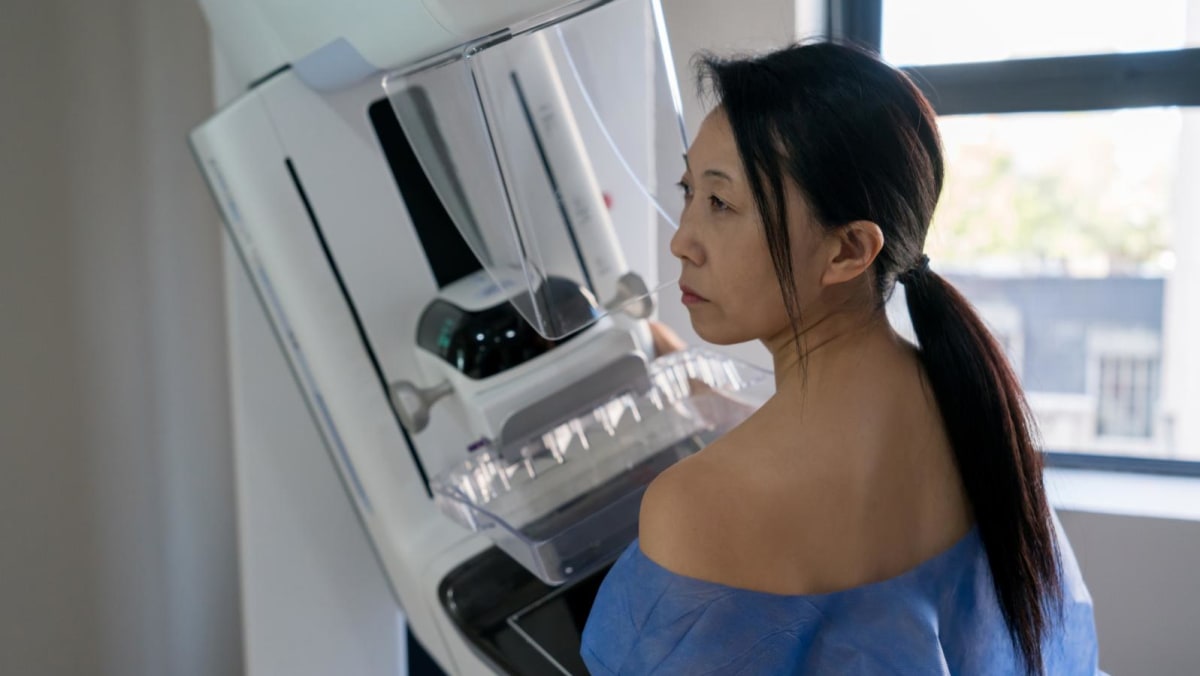Every year, over 2,000 women in Singapore receive the dreadful news that they have breast cancer. The most commonly occurring cancer among women here, statistics from the Singapore Cancer Registry Annual Report 2018 show that one in 13 women will get breast cancer in their lifetime. Every year, over 400 women die from breast cancer.
According to the Singapore Cancer Society, breast cancer usually originates from the cells lining the milk ducts and glands. The good news is when it is detected at this non-invasive or in-situ stage, treatment is easier and patients have a higher chance of recovery.
Treating breast cancer gets trickier when cancer cells invade the surrounding tissue, gaining entry into the circulatory and lymphatic system, and to other organs in the body, forming metastatic tumours.
The best way to prevent breast cancer: Early detection via breast self-examinations, mammograms and breast ultrasounds. Dr Jesse Hu, a breast and endocrine surgeon at Mount Alvernia Hospital, answers these questions about breast cancer from women in their twenties through seventies.
Related:
Mammogram, HPV test, pelvic ultrasound: What happens at each one and how can women prepare for them?
WOMEN IN THEIR TWENTIES
Q: AT WHAT AGE SHOULD I START SCREENING FOR BREAST CANCER AND WHAT SHOULD I DO?
“Every woman should start screening from the age of 20 by performing monthly breast self-examination (BSE),” said Dr Hu.
The best time to do BSE is seven to 10 days from the first day of your period, she said.
Check out this resource from Breast Cancer Foundation and learn to do BSE properly. Or, the next time you visit your general practitioner or gynaecologist, ask for a live demonstration.
The risk of developing breast cancer in this group is generally low, hence, only monthly BSE after 20, is recommended, she said.
Q: I AM TOO YOUNG TO HAVE CANCER. SO, THIS LUMP MUST BE BENIGN?
The good news is yes, most breast lumps are benign, said Dr Hu. In fact, only one out of every 10 lumps is cancerous. It is usually uncommon for women in their twenties to develop breast cancer.
However, warned Dr Hu: “It is not unheard of. Hence, it is important to see a doctor to evaluate the lump.”
Related:
‘We aren’t aliens’: The unseen struggles of breast cancer patients as they return to work after treatment
The unique struggles of women who have breast cancer in their 20s and 30s
WOMEN IN THEIR THIRTIESQ: WHO ARE THE POSSIBLE AT-RISK GROUPS? WHAT IS THE PERCENTAGE OF THOSE WHO GET BREAST CANCER DUE TO HEREDITARY REASONS?
The two main risk factors for breast cancer are being female, and age; the risk of cancer increases with age. Having a family history of breast and/or ovarian cancer, whether from your dad’s or mum’s side of the family, also increases your risk – note that both your parents can pass on mutated cells to you.
If someone in your family has had breast cancer, don’t scare yourself unnecessarily that you will definitely get it.
“Only 5-10 per cent of women diagnosed with breast cancer are hereditary. Conversely, 70-80 per cent of women diagnosed with breast cancer do not have a family history of breast cancer,” said Dr Hu.
However, nobody has the answer to ‘why’, though Dr Hu shared some research. “Breast cancer in young women is frequently familial, and about half of the women with breast cancer younger than age 30, harbour a mutation in BRCA1, BRCA2 or TP53 genes.”
Q: I’M CURRENTLY BREASTFEEDING. THIS LUMP MUST BE BREASTFEEDING-RELATED… RIGHT?
While it is true that most breast lumps discovered during breastfeeding are related to breastfeeding, not all are. See a doctor if the lump persists for more than a week.
WOMEN IN THEIR FORTIES
Q: ARE MOLE-LIKE GROWTHS ON THE SKIN OF THE BREAST ANY CAUSE FOR CONCERN?
These are usually due to age-related changes of the skin, said Dr Hu. “They are usually harmless and not an indication of breast cancer. However, it is best to see a doctor for any concerns.”
For example, surgeons use mastopexy (breast lift) and mammoplasty (breast reduction) techniques to remove the cancer and make the breast look “younger, rounder and perkier”.
“For those who choose to have mastectomy (whole breast removal), there is also the option of immediate reconstruction where the overlying skin of the breast and the nipple are preserved and only the breast tissue is removed,” added Dr Hu.
WOMEN IN THEIR SEVENTIES
Q: I’M 70 YEARS OLD. SHOULD I STILL GO FOR MAMMOGRAMS?
Some organisations say that women should stop screening when they are 70. Others recommend that screening continue as long as the woman is in good overall health, and if she is expected to live another 10 years or more.
“As cancer increases with age and early detection means better outcome, it is best to discuss with your doctor regarding the pros and cons of screening based on your health,” said Dr Hu.
Read this year’s breast cancer stories by CNA Women:
Why I went ‘topless’ on social media after breast cancer surgery: ‘Seeing my scar in pictures reminds me that I am still me’
Treating breast cancer: Doctors often focus on the medical and physical – what about the emotional?
Former actress and radio deejay Jamie Yeo shares she’s a breast cancer survivor
Stage 3 breast cancer kicked her out of her comfort zone: 'I am bolder and more willing to live my life well'
'It’s all for the women': This nurse has cared for breast cancer patients for 25 years and started a support group
CNA Women is a section on CNA Lifestyle that seeks to inform, empower and inspire the modern woman. If you have women-related news, issues and ideas to share with us, email CNAWomen [at] mediacorp.com.sg.










